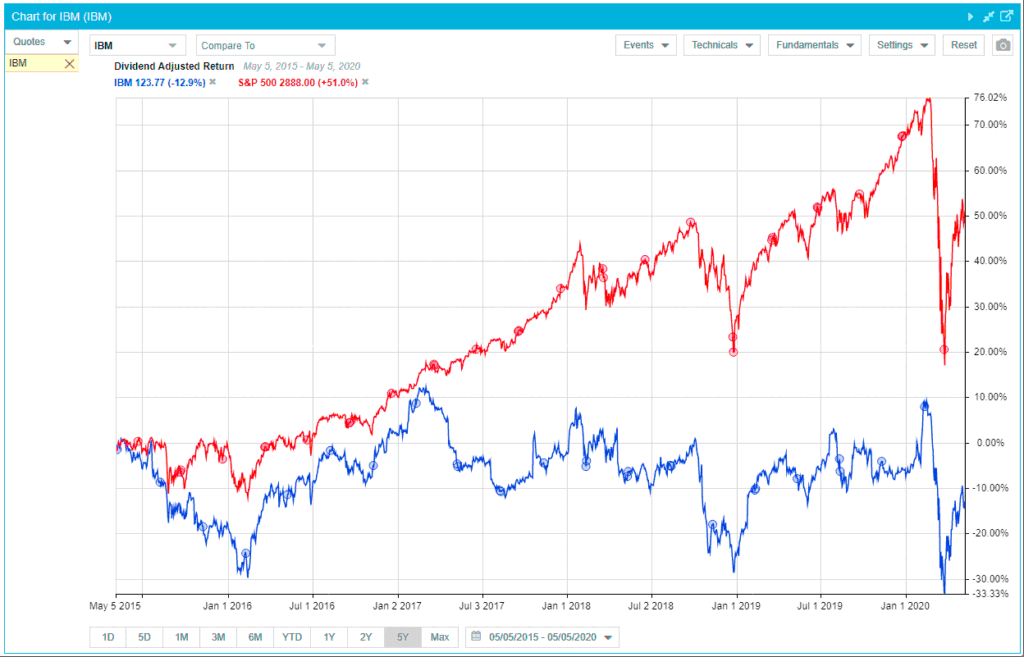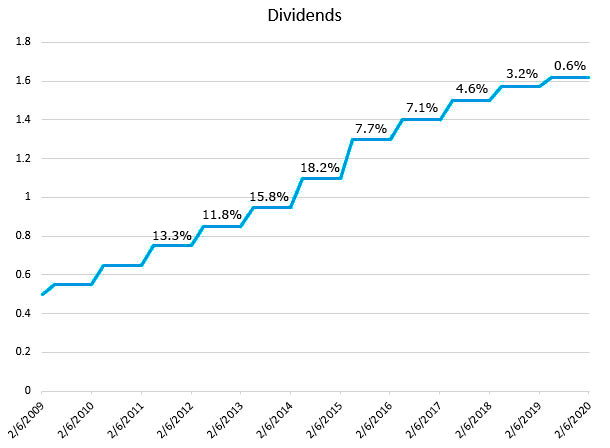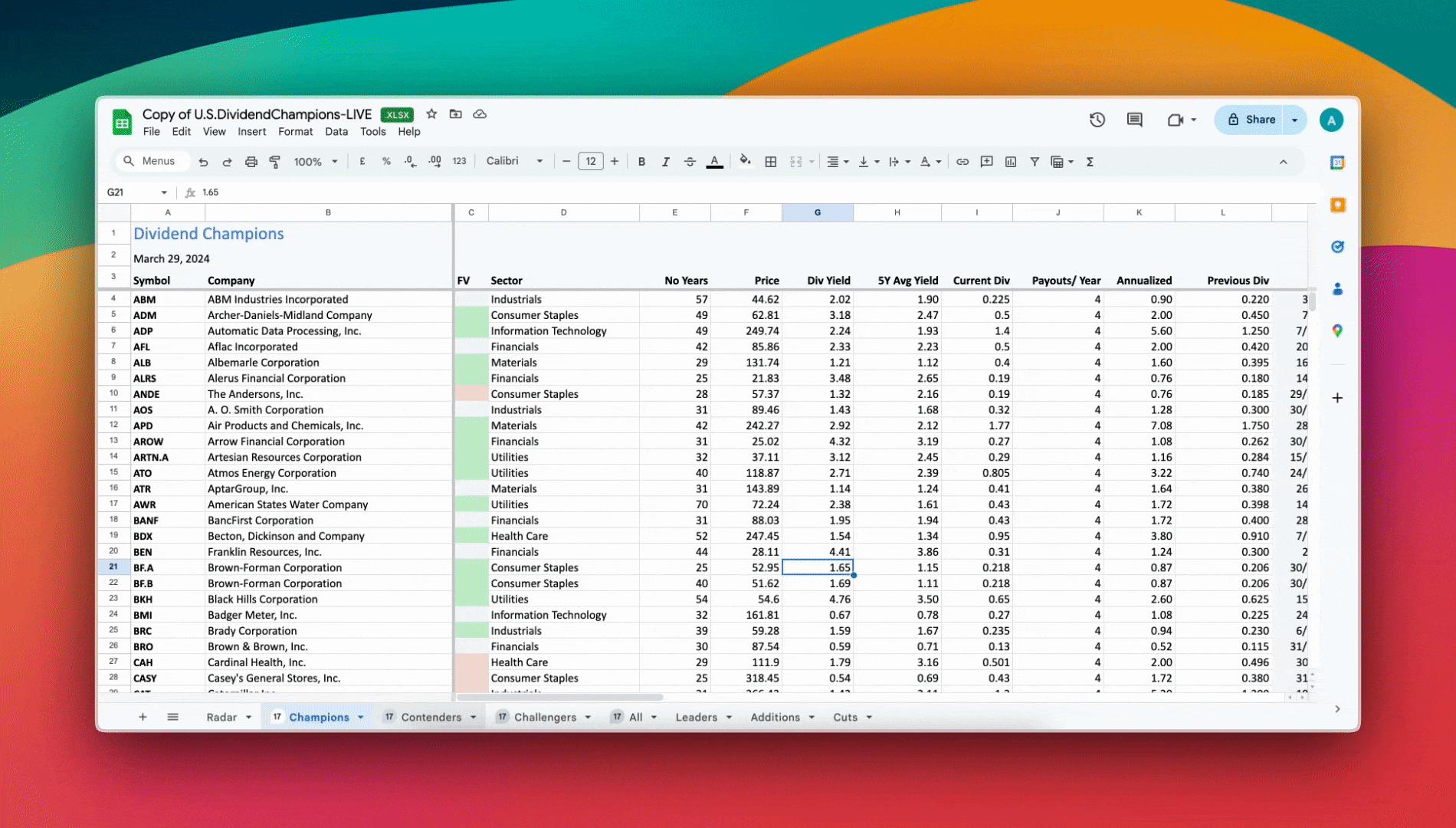IBM joined the elite Dividend Champions with their dividend increase in May which completed 25 straight years of dividend increases.I look at whether or not it is time for dividend investors to add it to their portfolios.
On 28 April 2020 IBM announced that holders of their stock on 8 May would receive a quarterly cash dividend of $1.63 per share. With the payment on 10 June, the company will have increased their dividend for 25 consecutive years. This allows them to join the 140 other Dividend Champions that have accomplished this feat.
I bought my first computer in 1981, a TI-99/4A. Back then many companies other than Texas Instruments sold computers, like Sinclair (which I also owned), Commodore (which offered the Amiga and VIC-20), and Apple. Each had its proprietary operating system, as well as software that worked only on their machine.
Start with Interactive Brokers
During this time IBM, as well as other companies, built computers that were generically referred to as IBM-compatible. They utilized the MS-DOS operating system, which over time morphed into Microsoft Windows. The licensing arrangement of this operating system allowed hardware companies to use a common platform for software, building a base of users that eventually shut out all competitors other than Apple.
Today IBM primarily sells infrastructure services, software, and IT services, hardware representing less than 10% of their revenue. Operating in 175 countries they service 95% of all Fortune 500 companies and manage 90% of all credit card transactions.
Should IBM be added to your dividend portfolio? This is a question only you can answer based on your personal needs and expectations. There appears to be a major upside possible, as well as a significant risk. Below is an argument for and against adding IBM to your dividend portfolio.
On the One Hand
IBM has been around seemingly forever. The name was changed from the Computing-Tabulating-Recording Company to International Business Machines in 1924. Their first experiments in computers date back to the 1940s, and until the 1980s the company name was synonymous with computers to the extent that a common saying amongst consultants was, “You won’t get fired recommending IBM.”
The current dividend yield of 5.2% is better than 2/3 of dividend-paying companies. The average yield of the S&P500 is 2% and the industry only 1.6% so this is very attractive. Dividend growth over the past ten years has been 10.1%
The payout ratio of 63.5% is high, compared to 36% in the industry, but not high enough to cause concern about the continuance of the dividend. A payout ratio becomes concerning when it moves over 100%, at which point the company needs to borrow money or sell assets to afford to pay the dividend. In 2017 IBM’s payout ratio reached 97%, but they showed that they consider the dividend to be an important element in their relationship with their investors by not having it affect the payout.
From a current valuation standpoint, the stock looks very attractive. The P/E of 12 places it in the lower end of the spectrum, and if one is to believe the calculations of fair value at $163 then there is plenty of room for the price to grow.
On the Other Hand
It would be reasonable to discount fair value looking into the future as the company has missed revenue estimates six of the past seven quarters, so these prediction models may not be helpful.
The share price of IBM over the past several years, during a time when the market has been on an unprecedented run, has been, to put it mildly, disappointing.

One should not purchase only for the dividend, that is what interest-bearing savings accounts and certificates of deposit are for. The investor should take both share price appreciation as well as dividend growth into account when considering a purchase. IBM’s stock price loss of 10% over the past five years, at a time when the S&P 500 has increased by 50%, is notable.
Although the dividend growth over the past ten years has been 10.1%, over the past five it has fallen to 8%, and over the past three years dropped to 5%. The dividend increase announced in May did mark 25 consecutive years of dividend increase but the increase was only one cent. This token increase one might think is the culmination of, so to speak, a flattening of the curve, as far as dividend growth is concerned.

The reason for the paltry increase stems from IBM’s $34 billion acquisition of Red Hat, IBM’s largest deal ever. This has increased their debt to $69.4 billion, representing $78.21 per share. The deal will help IBM with a larger presence in the cloud, which is one of its drivers of growth. The hopes are that this will end three consecutive quarters of declining revenue.
It’s Your Decision
It is interesting to read the buzz at this point. I have read articles decrying IBM’s lack of performance followed by others pointing to the opportunity. If the Red Hat acquisition goes well then IBM could do some catching up on Microsoft and Amazon in the cloud infrastructure space. If not then the debt could sideline IBM for years to come.
This is an essential growth area that could help IBM win new customers. There is reason to be hopeful that it will happen, as the first-quarter report showed that Cloud & Cognitive Software was the only unit that recorded notable sales growth, increasing by 7% – and this was in a coronavirus atmosphere.
The question as to whether IBM’s debt will saddle the company with an inability to move strongly into the cloud space or the acquisition fuels the company into badly needed growth will eventually be answered. The risk/reward factor is likely to be key with one’s decision on purchasing at this time.
